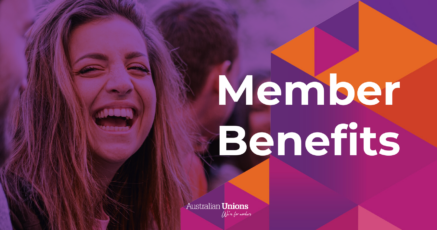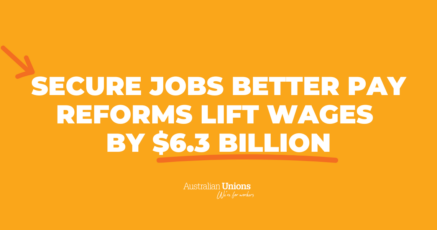Today is International Day Against Homophobia, Biphobia, Intersexism and Transphobia (IDAHOBIT) – a globally acknowledged day that celebrates LGBTIQ+ communities and spotlights the ongoing fight against discrimination.
Here at Australian Unions, we stand against Lesbian, Gay, Bisexual, Trans and gender diverse, Intersex, Queer and questioning (LGBTIQ+) discrimination. But more than that, we believe in creating workplaces that are inclusive and supportive of all workers.
Creating an inclusive culture is a job for every worker and one of the simplest ways we can build an inclusive culture in the workplace is through language.
To celebrate IDAHOBIT, we’ve compiled three small changes you can make to help LGBTIQ+ workers feel respected and included.
1. Familiarise yourself with common terms
The language used to describe LGBTIQ+ communities can change over time and can differ across cultures and generations. How common terms are used by individuals may also differ.
This guide written for use by Victorian Public Sector (VPS) includes a useful glossary of inclusive terms.
Transhub, a resource platform for all trans and gender diverse people in NSW, allies and health providers, has also prepared a helpful guide to talking about trans people.
2. Have a conversation
Sometimes, understanding what language to use is as simple as asking.
If a co-worker has told you they are LGBTIQ-identifying, have a chat about what terms they use to describe themselves, then use those terms.
Just remember, LGBTIQ people can get asked a lot of questions about LGBTIQ issues and experiences – they shouldn’t be expected to speak for everyone in their community.
3. Avoid making assumptions
Often, we make assumptions about someone’s gender, sexuality, and relationships through the language we use.
To help create a more inclusive workplace, use language that acknowledges diverse relationships and families. For example, use words like “partner” or “parents”, instead of gendered terms like “wife” or “mum and dad”.
Similarly, to be respectful of your LGBTIQ+ co-workers, don’t make assumptions about pronouns.
Pronouns are a way people refer to themselves or each other. Common pronouns are “he” and “she”. But some people prefer the gender neutral “they”.
Rather than assume a person’s gender and pronouns, ask them what pronoun they use, and offer up the pronouns you use.








SHARE:
Inclusive language in the workplace – 3 small changes to make a big impact